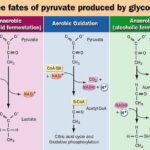AS and A Level Biology 46 Views 1 Answers
Sourav PanLv 9October 29, 2024
Differences in hydrogen bonding between C–G and A–T base pairs
Differences in hydrogen bonding between C–G and A–T base pairs
Please login to save the post
Please login to submit an answer.
Sourav PanLv 9May 15, 2025
There are distinct differences in hydrogen bonding between cytosine-guanine (C–G) and adenine-thymine (A–T) base pairs:
- Number of Hydrogen Bonds:
- C–G Base Pair: Cytosine and guanine form three hydrogen bonds, making this pairing more stable and harder to separate.
- A–T Base Pair: Adenine and thymine form two hydrogen bonds, providing less stability compared to C–G pairs.
- Stability of DNA:
- Because C–G pairs have three hydrogen bonds, regions of DNA with a higher C–G content are generally more stable and require more energy (heat) to denature or separate the strands. In contrast, A–T-rich regions are less stable and separate more easily due to their two hydrogen bonds.
- Implications for DNA Function:
- The higher stability of C–G bonds influences DNA replication and transcription, especially in certain regions of the genome, where higher C–G content may help preserve structural integrity in key areas such as gene promoters and telomeres.
These differences in hydrogen bonding contribute to the structural and functional characteristics of DNA, affecting stability, replication fidelity, and melting temperature.
0
0 likes
- Share on Facebook
- Share on Twitter
- Share on LinkedIn
0 found this helpful out of 0 votes
Helpful: 0%
Helpful: 0%
Was this page helpful?




